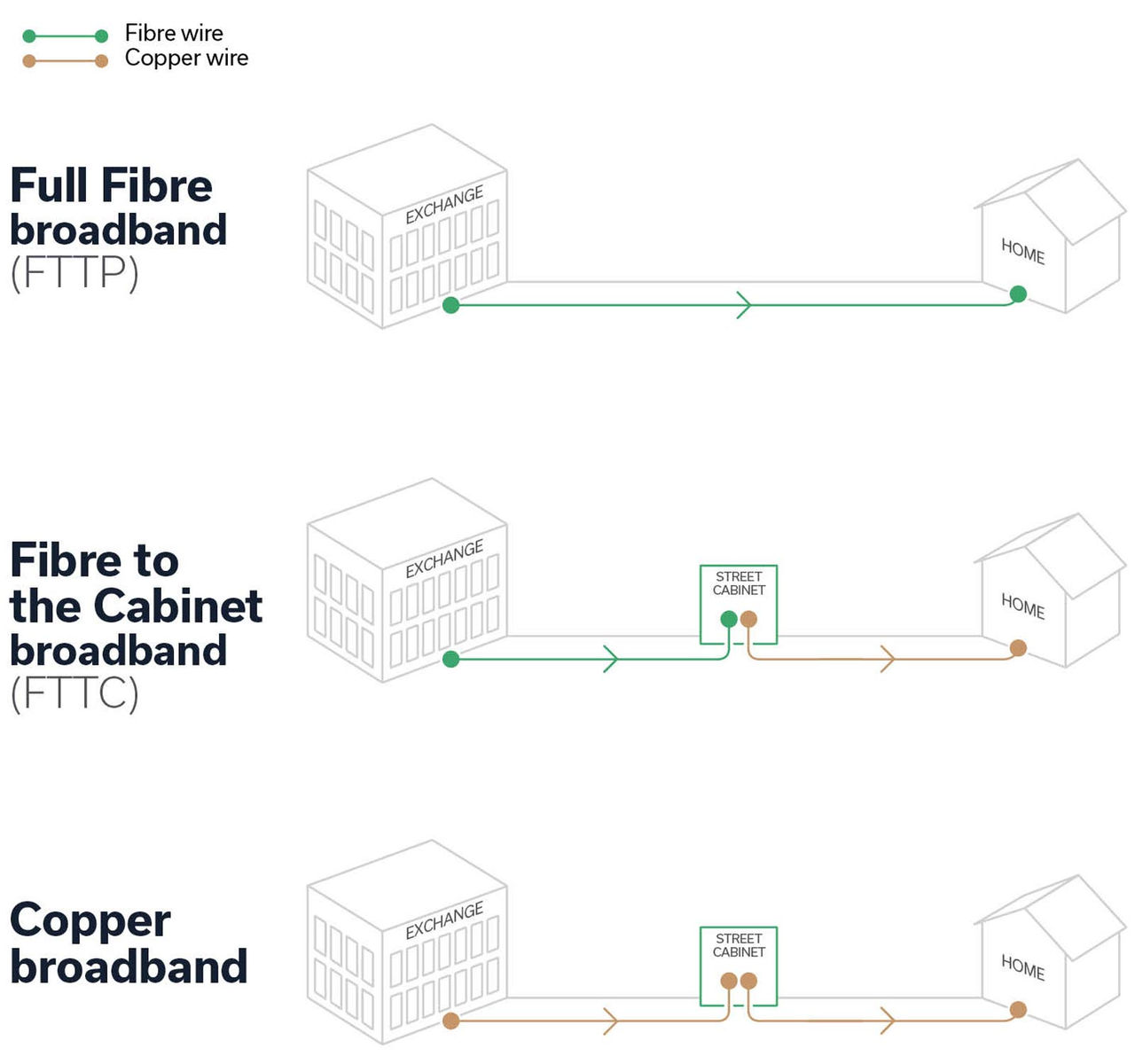
FTTP vs FTTC – what does it all mean?
By Andy Snellgrove | Date published: 24th July 2023 | 2 min read
Not all broadband technologies are created equal
Broadband can be a complicated place. Full of technical terms and abbreviations, understanding your options can be tough, especially if cables and connections aren’t usually your thing. But fear not, that’s where we come in.
As the people who build and maintain the networks of cable that bring broadband to most homes and businesses across the UK, we’re perfectly positioned to help make things simple for you. And we will.
In this blog, we’ll break down some common jargon so that you have the power to make the best broadband decisions. Join us as we explore the benefits of FTTP vs FTTC.
First, let’s recap the history
Originally, broadband was provided through electrical signals in copper phone lines, but there were issues. Copper is vulnerable to weather damage and not capable of carrying information quickly or in large quantities.
So, as gaming, smart phones and the need to connect multiple devices at once took off, we began to replace parts of the network with weather resistant fibre optic cable which uses light instead of electricity to transmit huge amounts of information, fast.
When we talk about different types of broadband, we often refer to how much, and where, fibre optic cable is used, especially in relation to our regional and local hubs, buildings known as exchanges.
What is FTTP?
Also known as Fibre to the Premises, Fibre to the Home and Full Fibre, this type of connection does away with traditional copper wires completely. Every part of the journey from our exchange to your home or business is made from weatherproof fibre optic cable, giving you reliable broadband that can handle virtual reality, streaming, gaming, browsing and video calling on multiple devices all at once without a hitch. And all at lightning-fast download speeds of up to 1,600 Mbps.


What is FTTC?
FTTC stands for Fibre to the Cabinet and is our most widely available connection, used to deliver Fibre to the Cabinet broadband, this type of connection combines both traditional and modern cables into one network. Fibre optic cable connects our exchange to the cabinet in your street, and traditional copper cable continues the connection from there to your home or business. While it's not as speedy or reliable as Full Fibre, it’s still better on both fronts than an entirely copper connection, and able to offer downloads at up to 76Mbps, making it great for streaming, browsing and video calling.
In a nutshell
When it comes to FTTP vs FTTC, Fibre to the Premises wins every time because it is built entirely from super resilient, ultra fast modern cables. No amount of typically rainy UK weather will break it. And no number of virtual reality loving, binge watching, video calling housemates will slow it down. It’s built for now, and for the future of technology, and it’s ready for anything you throw at it.
Next steps
We’re working hard across the country to get Full Fibre to as many people as possible, so if you can’t get our best connection quite yet, we’ll keep in touch and let you know as soon as it arrives.
Enter your postcode into our handy fibre checker to see if you can also experience superfast and reliable speeds.
Written by Andy Snellgrove
Andy is the Openreach FTTP Product Manager and brings a wealth of experience in the broadband industry.With a strong background in launching FTTC, GFast, and most recently FTTP, he has collaborated with leading telecommunications companies to develop cutting-edge broadband capabilities.
Dive into other blogs that help to demystify complex broadband technology terms

What is a good download and upload speed?
Get the lowdown on broadband speed essentials in our informative blog. Uncover the differences between download and upload speeds, and learn how to keep your connection running smoothly.

Heard of Wi-Fi calling but don’t know how it works?
Learn all about Wi-Fi calling, a feature that allows you to make phone calls over a Wi-Fi network instead of using your phone provider’s network.

A guide to the best broadband for gaming
Are you a gamer? Dive into our comprehensive guide to discover the best broadband options specifically tailored for gaming enthusiasts.



















